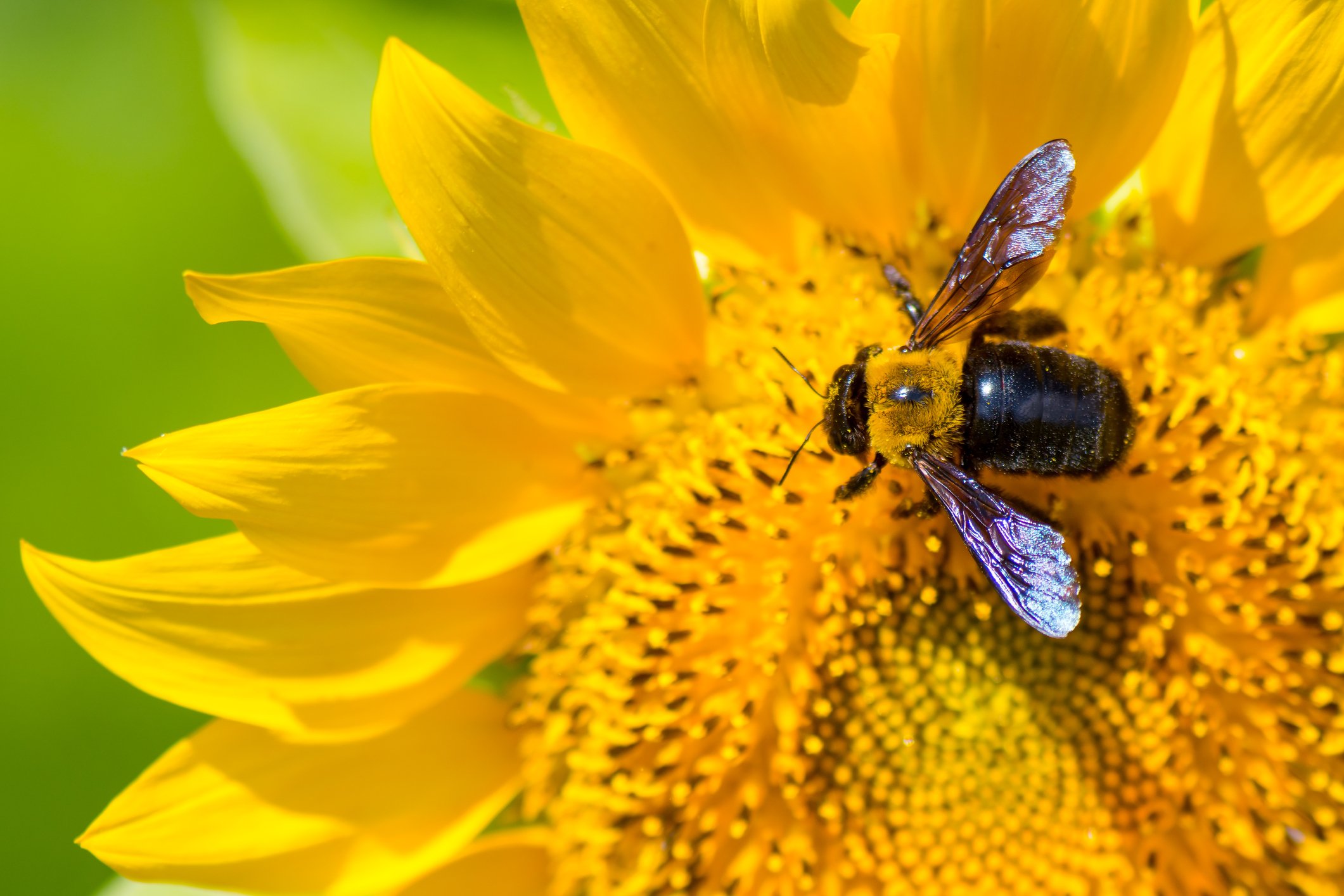How to Repel Carpenter Bees Without Pesticides
Tracy Teuscher
Much misunderstood and beneficial carpenter bees are INCREDIBLE vegetable and crop pollinators that are often confused with the bumble bee.
They look very similar to the bumble bee, except they are larger and they have a "shiny hiney" instead of a "fluffy butt". (These are technical terms you can use to impress your friends.)
ABOUT CARPENTER BEES
1. Carpenter bees are only attracted to dead, soft, unfinished wood. They don't know the difference between "good dead wood" and "bad dead wood."
2. They are solitary cavity nesters and superhero pollinators of many vegetables, crops, and flowers. They are introverts who keep to themselves unless you are near their nesting place.
3. The female builds the nest, and the male, (Mr. I don't have a stinger), guards it. Sometimes they will hover near you like little helicopters. Don’t worry. They couldn’t sting you if they wanted to.
4. Female carpenter bees are brilliant little bees who will return to the same nesting place each year unless the wood has been well-sealed (painted and or stained with two coats) or the nesting place has been removed. Even though this is a new generation of carpenter bees, they carry the wisdom of last year’s nesting place. Amazing!
5. The BEST way to deter them is to be sure the wood around your home, deck, and shed are well-sealed with two coats of stain or paint. Also, remember to caulk any open spots or seams.
If they are trying to nest but not established, you can deter them with a simple, 3-ingredient peppermint oil spray (recipe below), or try Mighty Mint, a commercial product available at most stores.
6. If you find carpenter bees and they are already established, consider a professional relocation service. The nesting tunnels can be long. So is the nesting season for carpenter bees, which runs from March to October in Ohio. Here's a bee-conscious service that some of our followers have used that doesn't harm the bees. Maybe they can help point you in the right direction? https://barneswildlifecontrol.com/bee-removal-service/
PEPPERMINT IS ONE OF THE MOST EFFECTIVE REPELLENTS
Try this simple 3-ingredient recipe for a natural deterrent spray to prevent them from nesting (do not spray it on the bees). Early mornings and late evenings are good times to treat any unsealed wood areas that you’d like them to avoid because these are times when they are not as active. By monitoring the areas, you will easily be able to see when they are busy and when they are resting.
BONUS: This is also a great natural deterrent for other pest insects, like mosquitos, biting ants, earwigs, and more. (Safe for you, your family, and your pets, indoors and out.)
WHAT YOU’LL NEED
A Clean spray bottle (22 to 32 oz.)
Add 2 Tablespoons of liquid Castille soap. (We use Dr. Bronners. Or, you can try Murphy’s Oil Soap.)
Fill the spray bottle slowly with water.
Add 10 to 20 drops of pure essential oil of peppermint. Peppermint oil is highly concentrated, readily available, and very affordable.
Swish gently to mix, then spray on the areas or entrances where carpenter bees are trying to set up housekeeping. Swish gently between applications to keep the solution well mixed.
Or, you can buy a very similar prepared product called Mighty Mint at your local garden center, box store, and many major retailers.
A SUCCESS STORY
A few spring seasons ago, we gave this recipe to our neighbor who noticed some carpenter bees trying to nest under the eaves of his shed. He applied this solution to that area of the shed two times per day, early morning, and in the evening. He said it worked like a dream, they moved out without being harmed, and it “smells like a candy cane!” Success!
PROVIDE ALTERNATIVE NESTING AREAS
If you like the idea of providing nesting areas, (we do, too) try placing blocks of soft wood like pine, cedar, or larch at the back of your property. One good source is the lumber area of big box stores. Stop by and ask if they have any scraps or discarded blocks of these types of soft wood that you might have. Place them away from your home in a shady area and see who finds them.
We hope you found this blog helpful!
Get more amazing things delivered to your inbox by signing up for our newsletter at www.saveohiobees.org/sign-up.
